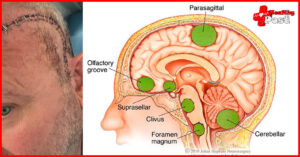
Asian massage, the differences between these massages?
What are the differences between these major asian massage styles: Thai, Hong Kong, Korean, and Japanese ? Let me try to explain, what is the problem?
With this friend’s question in mind, I searched here and there on the Internet.
As a result, apart from some weird pictures , there was very little really useful information.


Because the information in this area is really limited, I had to seek advice from massage experts in the industry, and finally got a more satisfactory answer.
Water has sources and trees have roots. Although they are both massages, the historical origins of these massages are still quite different.
Japanese massage
Japanese acupressure , which mainly evolved from ancient Chinese medical techniques such as acupuncture and massage. Many of them retain the acupuncture and acupuncture techniques of traditional Chinese medicine, and are theoretically closer to the meridian theory of traditional Chinese medicine.

Hong Kong-style massage: Mainly found in the southeastern coastal areas of China, it is a unique health-care massage technique based on bathing, rubbing the back , and massaging, absorbing and borrowing Western oil-pushing techniques, and adding China’s unique stilt-stepping therapy.
Korean massage
Korean bone massage, mainly originated in Korea. It was originally a Korean family massage method. It later absorbed the essence of Thai, Hong Kong, Japanese and Chinese massages to form a Korean local massage technique.

Thai Massage
Originated in ancient western India. The founder was Jivako Kumar, the royal physician of the Indian king. His traditional medicine and massage knowledge and techniques were brought to Thailand by missionary monks.
As one of Thailand’s ancient medical cultures, Thai massage has a history of more than 4,000 years and can be described as a long history.

In summary, Japanese, Hong Kong, and Korean massages are all inextricably linked to traditional Chinese massage.
However, Japanese massage is the Japanese localization of Chinese massage.
Hong Kong-style massage is a combination of Chinese massage and Western massage.
Korean massage is based on Korean family massage and draws on the best of other families.
As for Thai massage, it originated from ancient India.
[Differences in technical performance]
All talk without practicing fake moves, just practice without talking about silly moves.
Although in terms of historical origins, Japanese, Hong Kong, Korean, and Thai massages can be distinguished, massage is not archeology after all. The historical origins are one thing, and the actual performance is another.
I learned from some people in the industry that although under normal conditions, it is difficult for ordinary people to distinguish between Japanese, Hong Kong, Korean and Thai massages, apart from these conventional massage techniques, massages in different regions still retain some distinctive features. Different characteristics .
There is no acupuncture point in Thai massage, but it focuses on moving the joints, striving to achieve a state of full body stretch and physical and mental relaxation.
Therefore, in Thai massage, you will often see many large-scale movements , such as stretching your back and folding your legs. The whole process is so intense that you can even hear the sound of bones.

Japanese massage
Compared with the large scale of Thai massage, Japanese massage is much gentler.
For example, the most characteristic acupressure in Japanese massage is to apply pressure with the fingertips, use the limbs or fingers as a support frame, and use your own body weight to move vertically toward the center of the limbs. During acupressure, stay on the area for 3-5 seconds. Avoid applying pressure quickly and violently, but apply pressure evenly and slowly.
Korean massage
Hot compress and bone loosening are the iconic actions in Korean massage techniques.
Usually, Korean masseurs will use wrenching techniques to loosen the bones along the bone seams of the shoulder blades, spine, and hip bones. After relaxing the limbs, they will use medical stones or hot water bottles to apply hot compresses.

Hong Kong style massage
Hong Kong-style massage was born out of Chinese massage. The technique reduces the pressing of acupoints and adds rolling and back stepping , so Hong Kong-style massage is gentler and more comfortable.
In addition, Hong Kong-style massage techniques are mostly based on squeezing, but there are also friction and tapping techniques .
Summarize:
There are no acupuncture points in Thai massage, but the overall movements are intense and intense.
The massage is gentle and characterized by acupressure.
Korean massage usually involves bone loosening and hot compresses.
Hong Kong-style massage is gentler and more comfortable than Chinese massage, with back stepping and rolling.
After seeing this, I believe many people have a preliminary understanding of the characteristics of Hong Kong, Korean, Thai and Japanese massages.
But in real life, with this knowledge, can we accurately determine what kind of massage the massage parlor on the street belongs to?
Because there are a large number of street massage parlors, although they pretend to be proficient in all kinds of massages, they are actually just trying to attract customers into the stores so that they can sell various expensive sideline businesses .
Therefore, carefully distinguishing what “style” massage is may really become a “cold knowledge”.


2 thoughts on “Asian massage, the differences between these massages?”